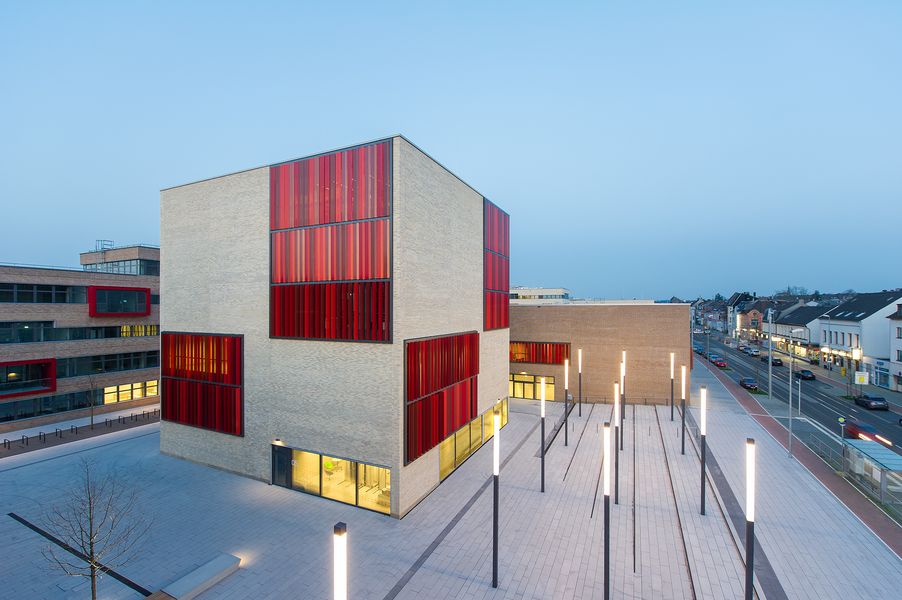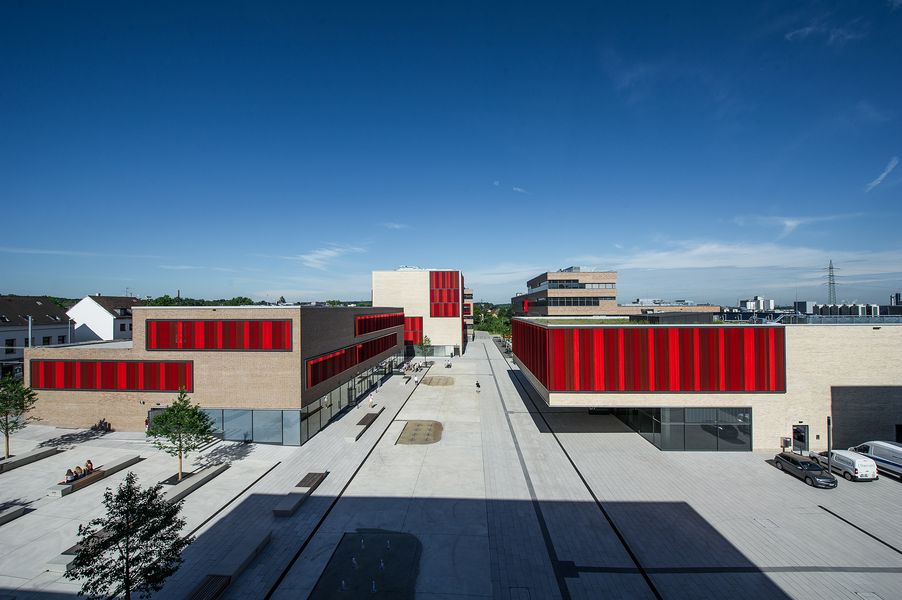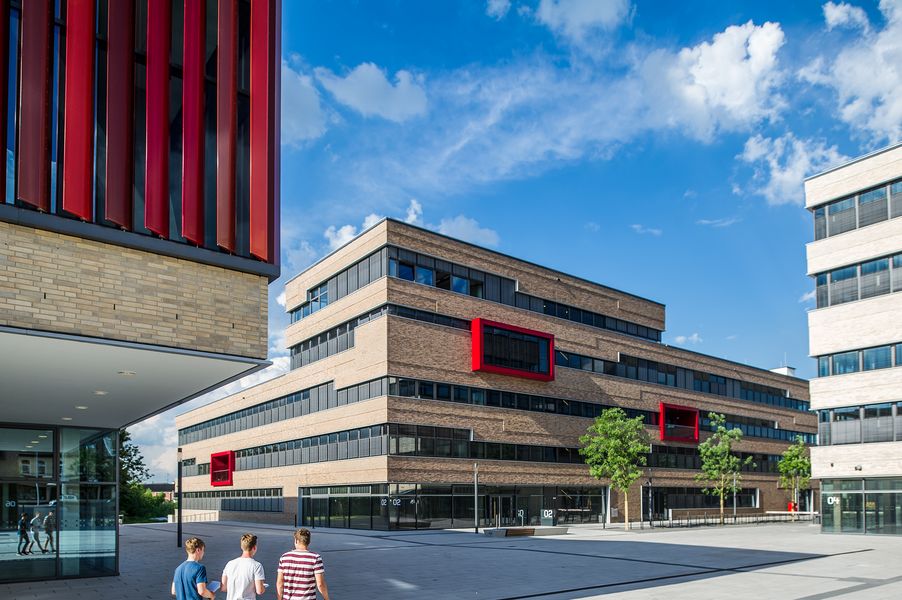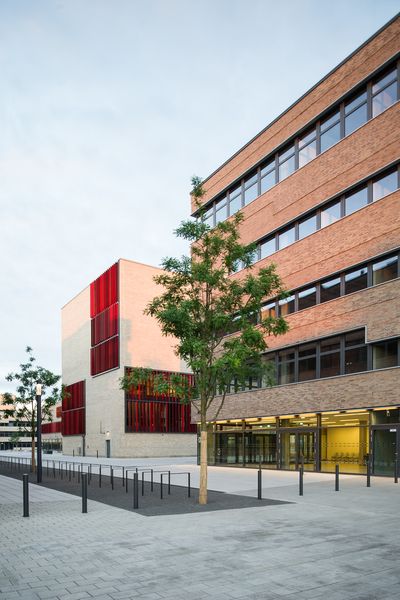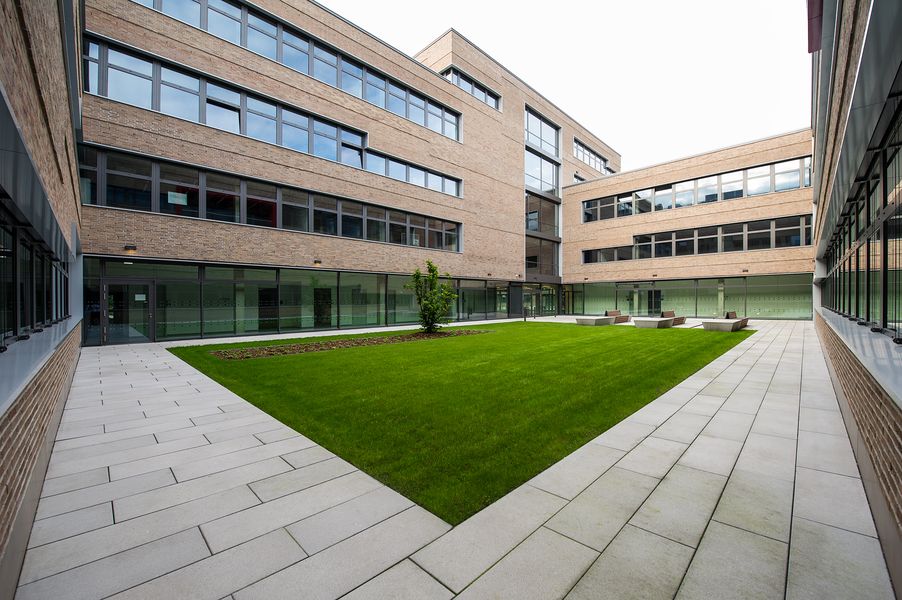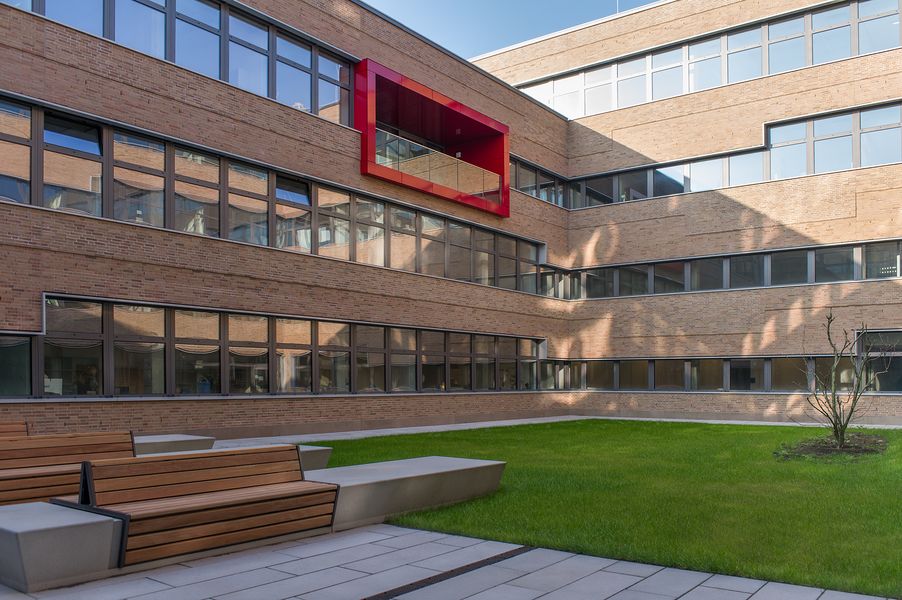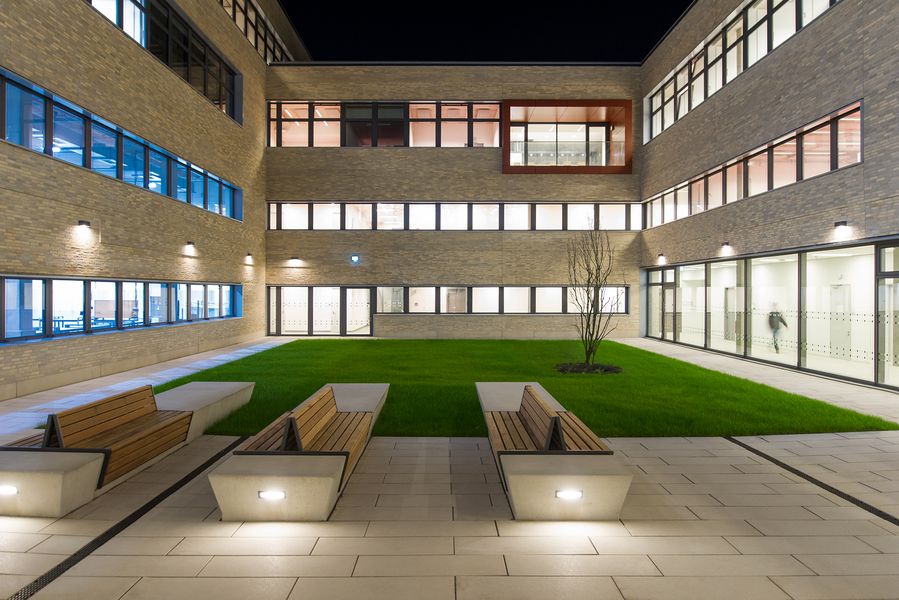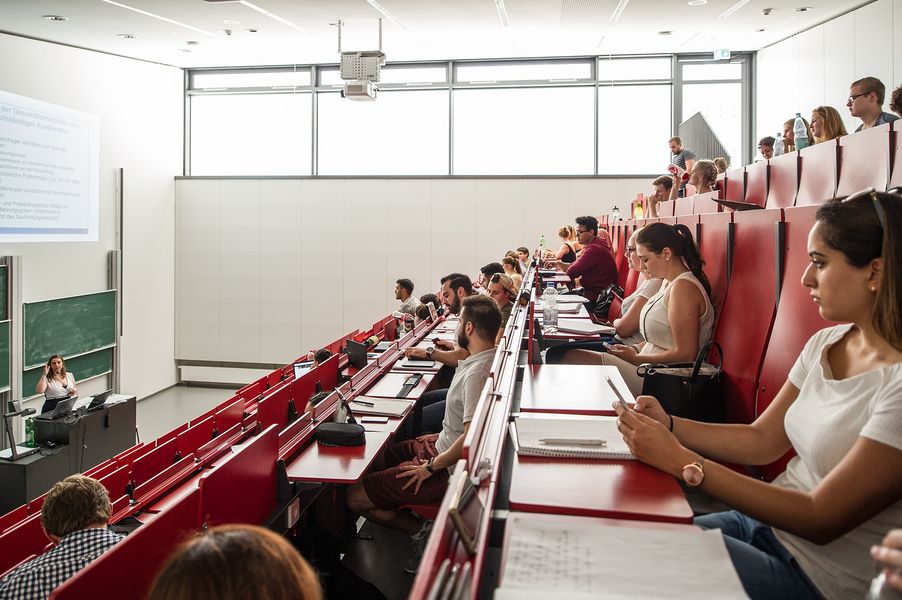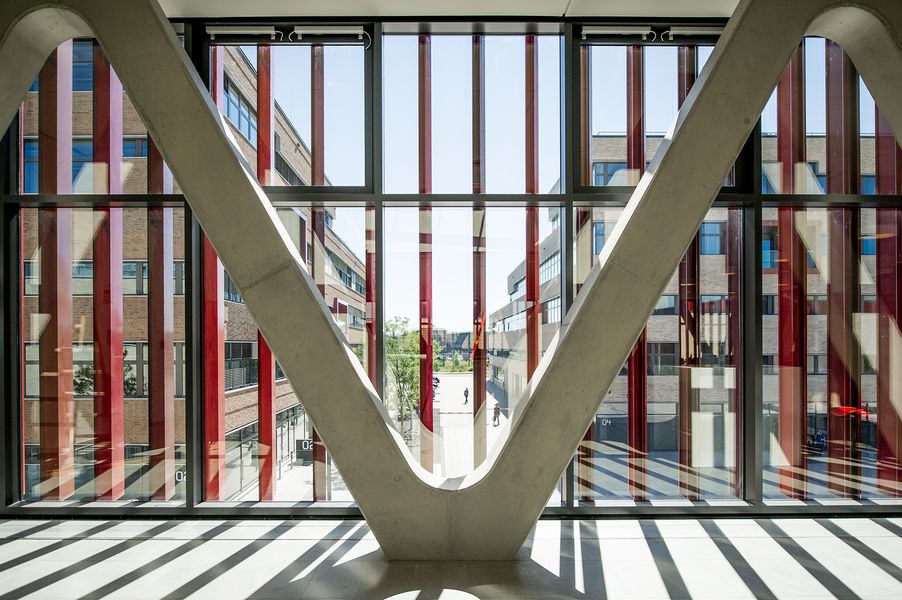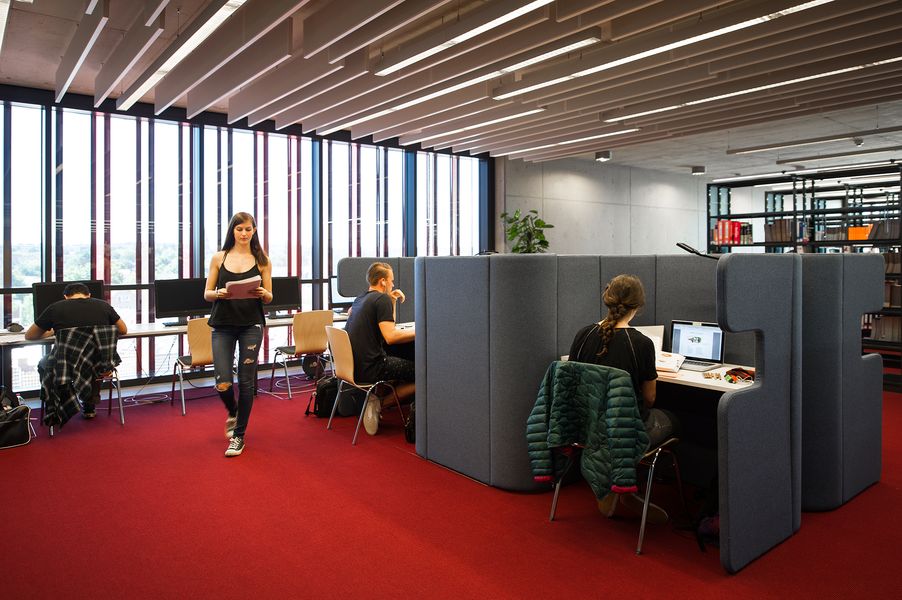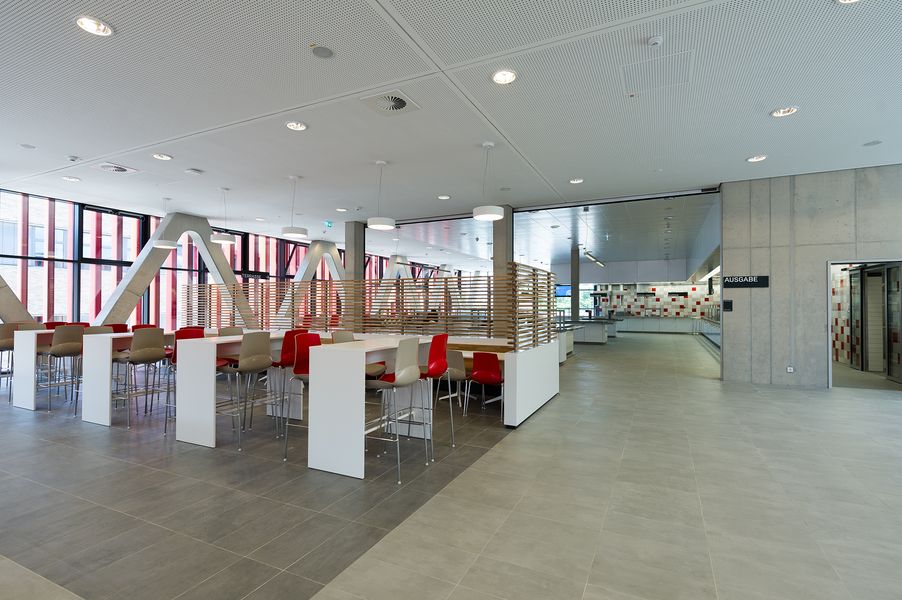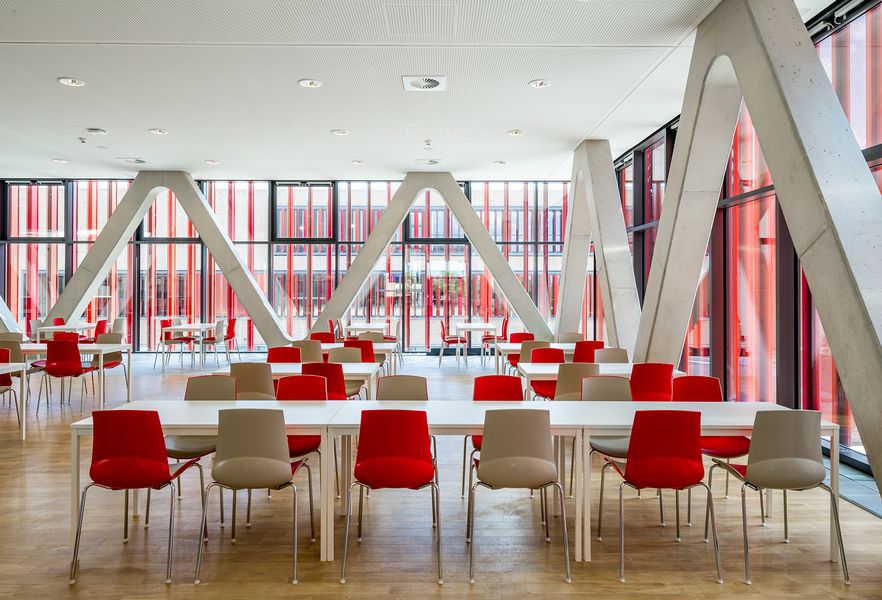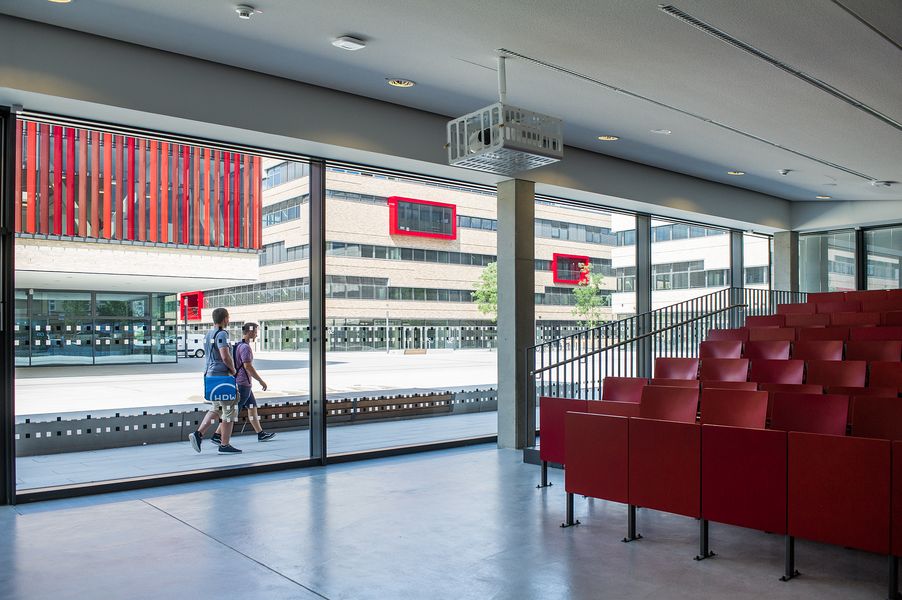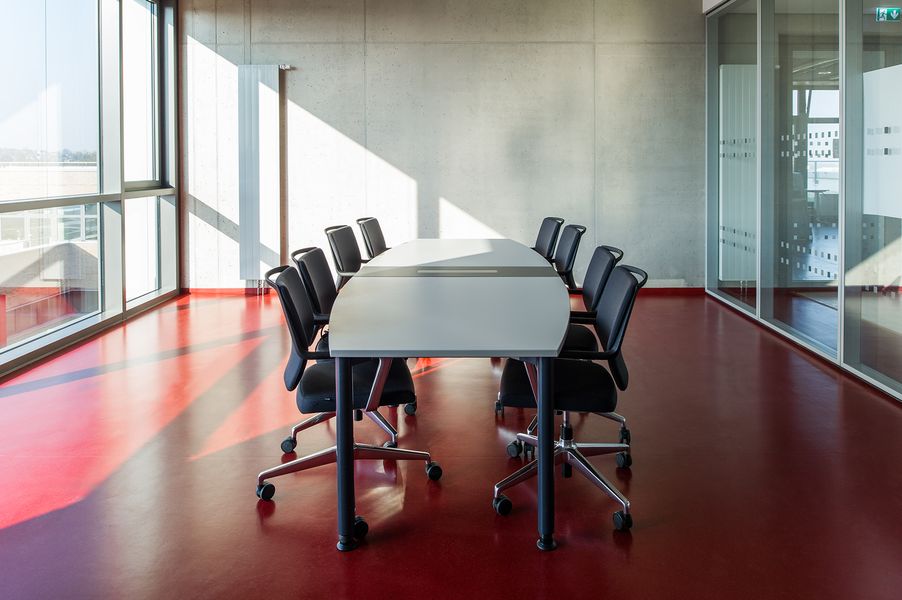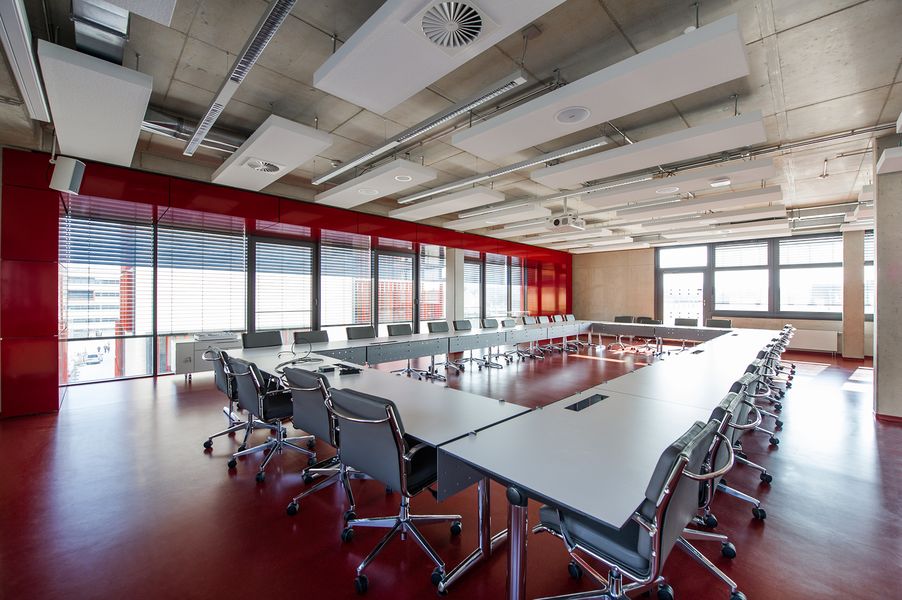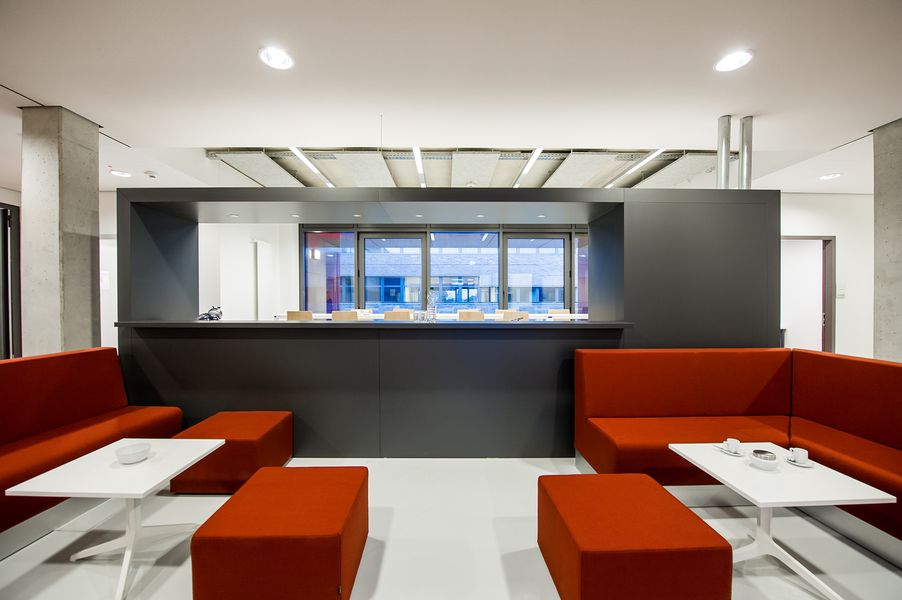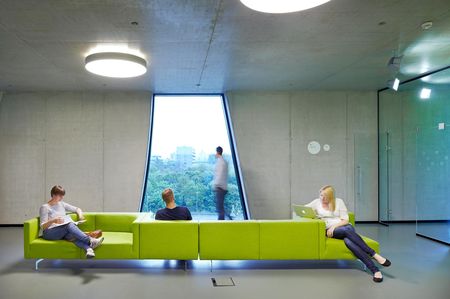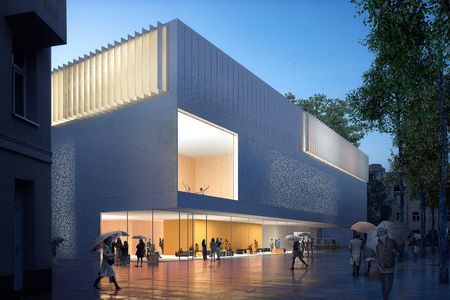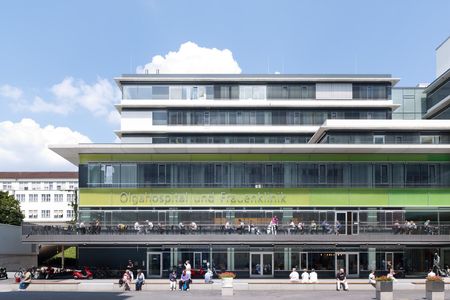A living urban component
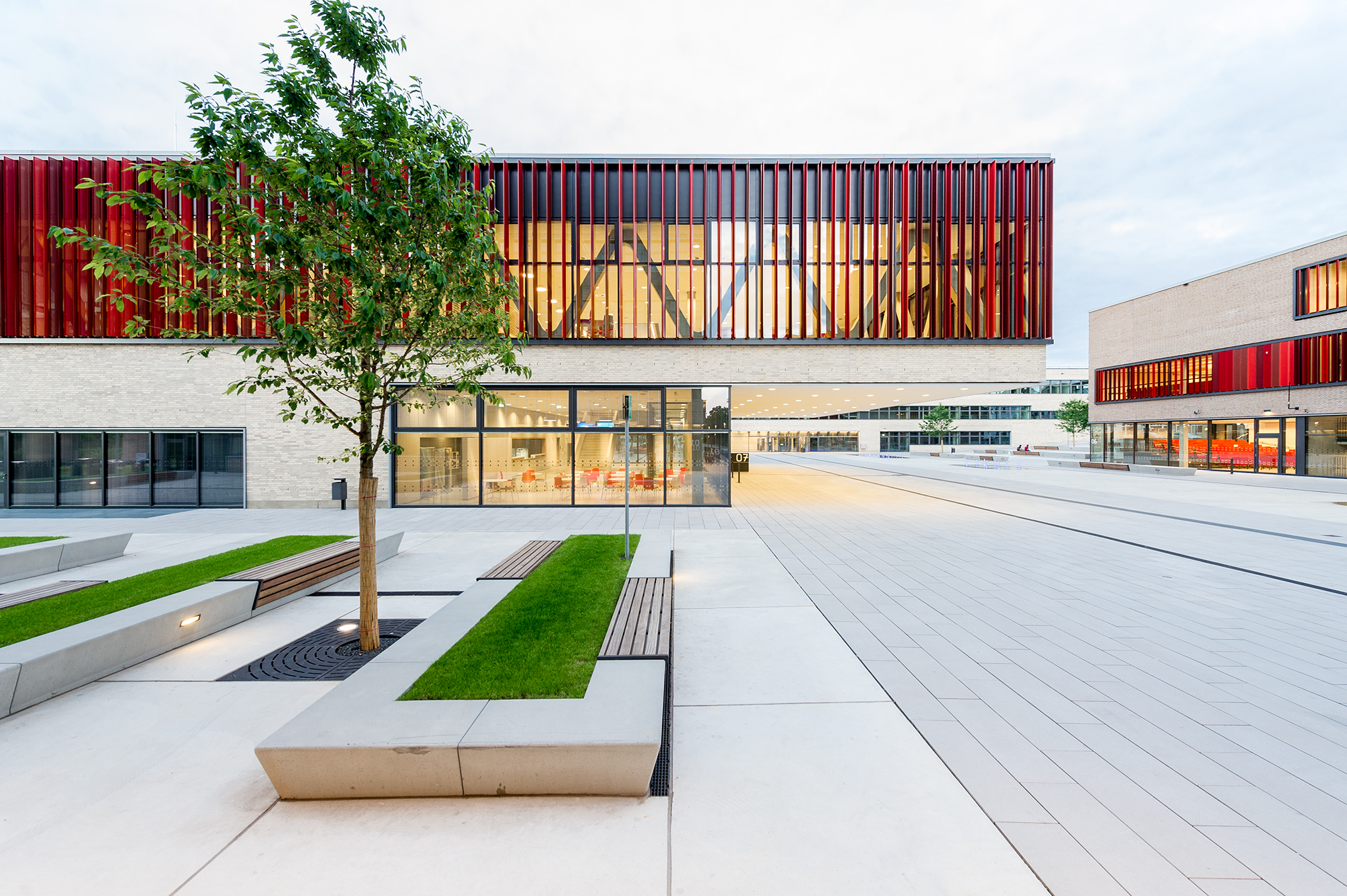
Ruhr West University
Client: BLB NRW, Münster / Location: Mülheim an der Ruhr
GFA: 62,500 m² / Completion: 2016
Architecture: ARGE HPP / ASTOC / Awards: Good Buildings Award
(Auszeichnung guter Bauten) 2017, BDA Mülheim, iF-Design Award 2017
Services: Master planning, Architecture, Interior design
In March 2011 the consortium composed of HPP / ASTOC were awarded the master planning contract, the brief for which, was to develop a new location for the Ruhr West University on a 40,500 m² site.
The contract was awarded on the basis of a European-wide tendering process and two-stage competition. 15 consultant engineering companies were taken on board for the execution of the master plan.
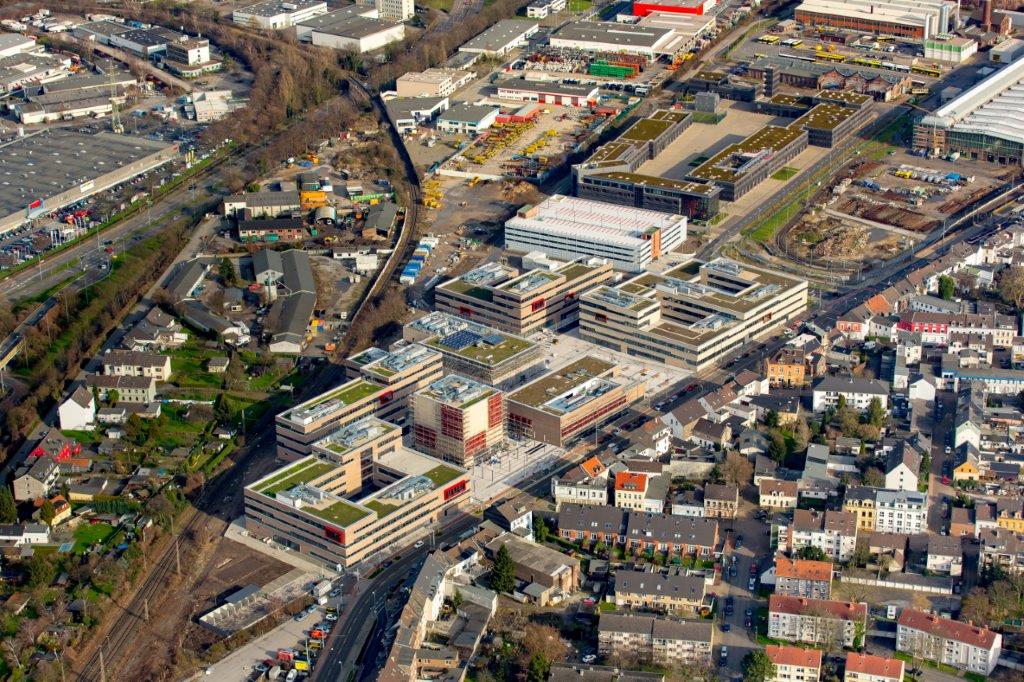
Access and integration
The HRW Campus and the adjacent multi-storey car park can be reached in the south by tram and private transport. In the north, the campus is connected to the city centre via the cycle path. Bicycle stands are located in central locations on the campus and ensure easy access.
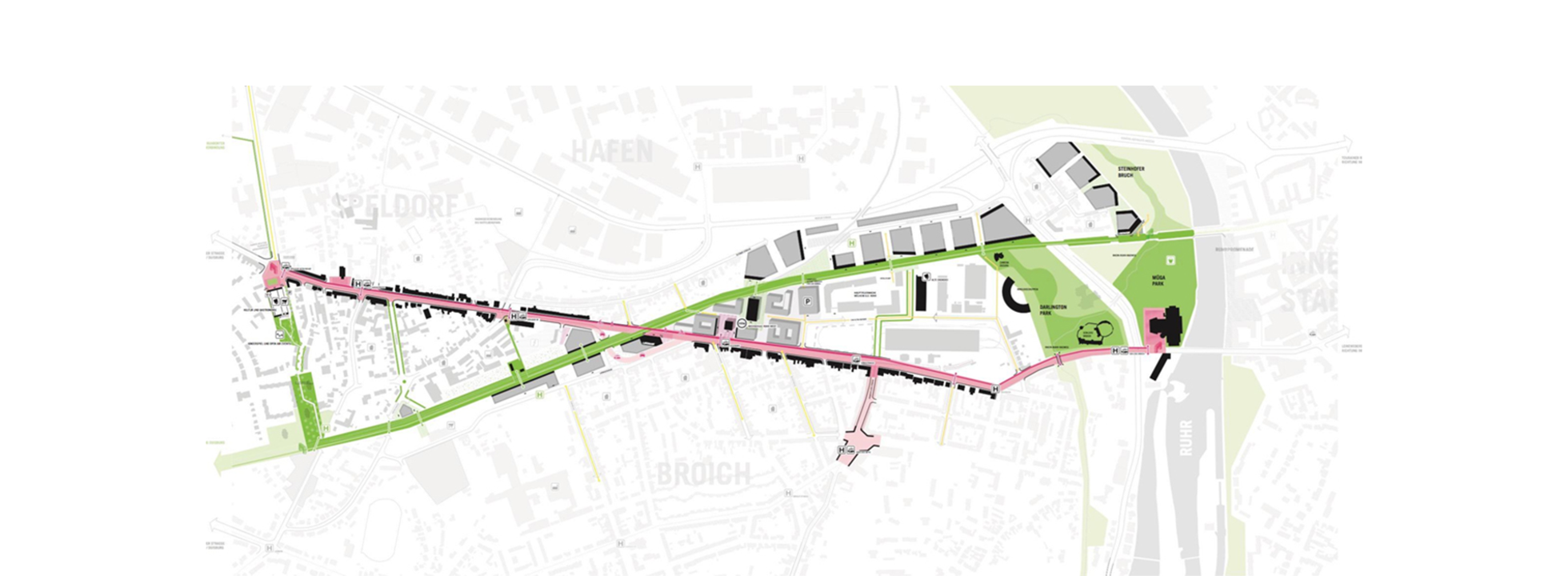
Masterplan by ASTOC
With eight buildings and a gross floor area of almost 62,000 square metres, the campus has the dimensions of an independent quarter. Four faculty buildings, a canteen, an auditorium building and a library as well as a multi-storey car park were built on the former railway site.
The size of the new Ruhr-West University campus in Mülheim an der Ruhr makes it a key building block in the development of the city.
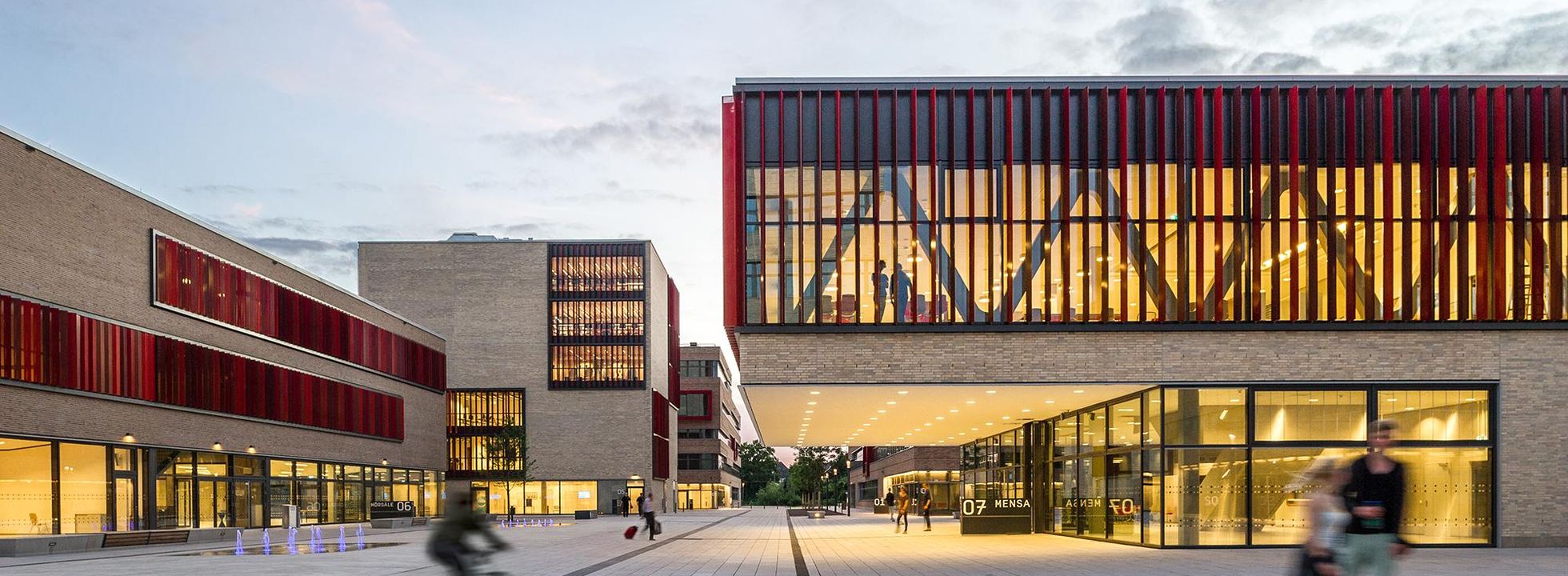
Interaction of campus and adjacent areas
Located in the Broich district on the border between an industrial and a residential area, the campus has to blend into a heterogeneous environment. The two to six-storey buildings are oriented in size and height to the neighbouring buildings and open up to their surroundings. Generous open spaces facilitate easy movement across the campus on various axes. As a result, the site serves as a link between the adjacent residential and commercial areas.
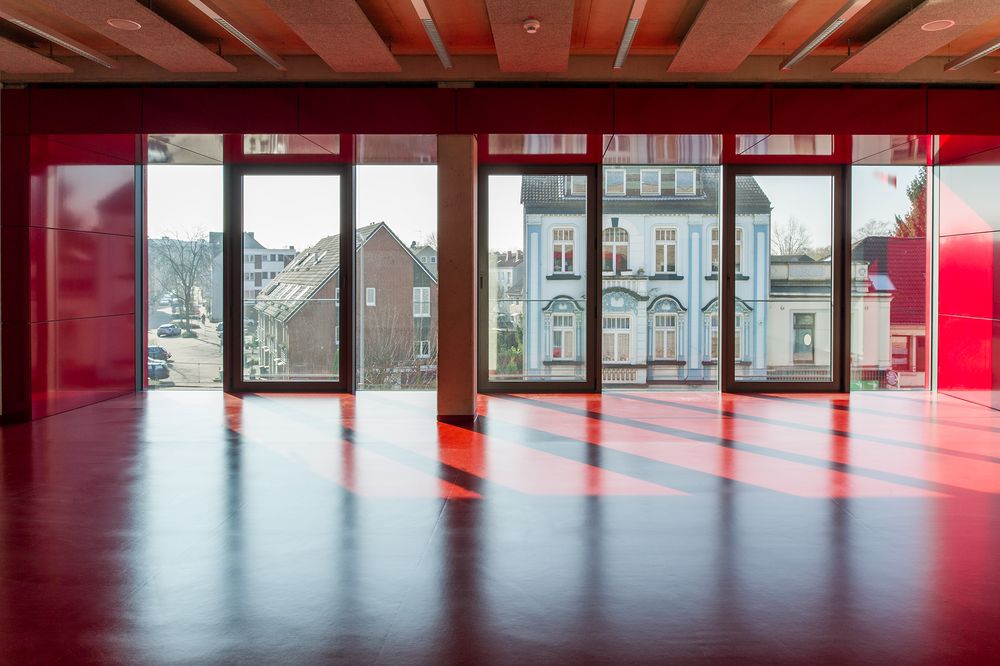
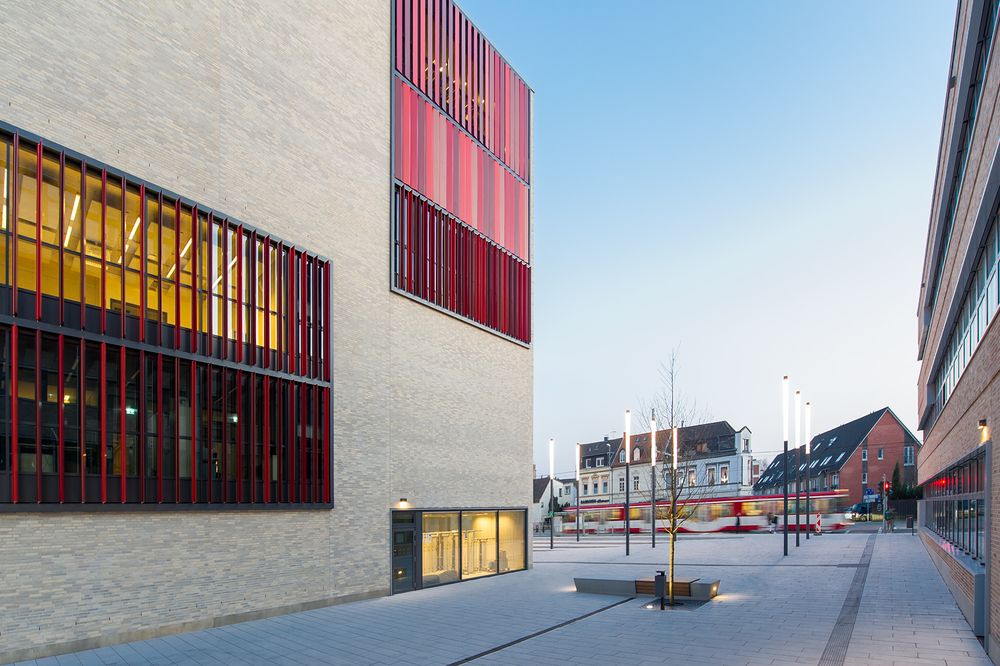
The residential area and the neighbouring infrastructure will be vivified and enriched by events at the new university and on the many public spaces on the campus, which not only invite students to linger but are also accessible to local residents for leisure activities.
Teaching is made visible, integrated into the urban context, socially networked and structurally meaningful.
Interaction of specialist and faculty buildings
An essential design feature of the central buildings is the dialogue with the surrounding faculty buildings. The library, lecture hall centre and canteen are distinctive points on the campus and are visible from all sides. The dining room rises above the campus and offers a view of the other buildings. The library stands as a landmark and is taller than all of the other buildings.
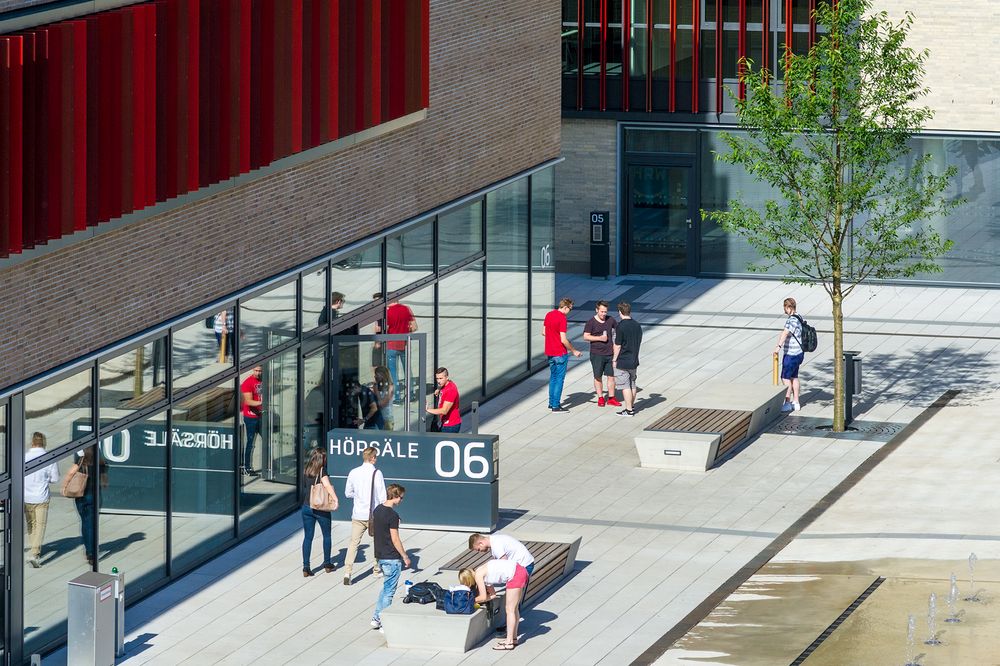
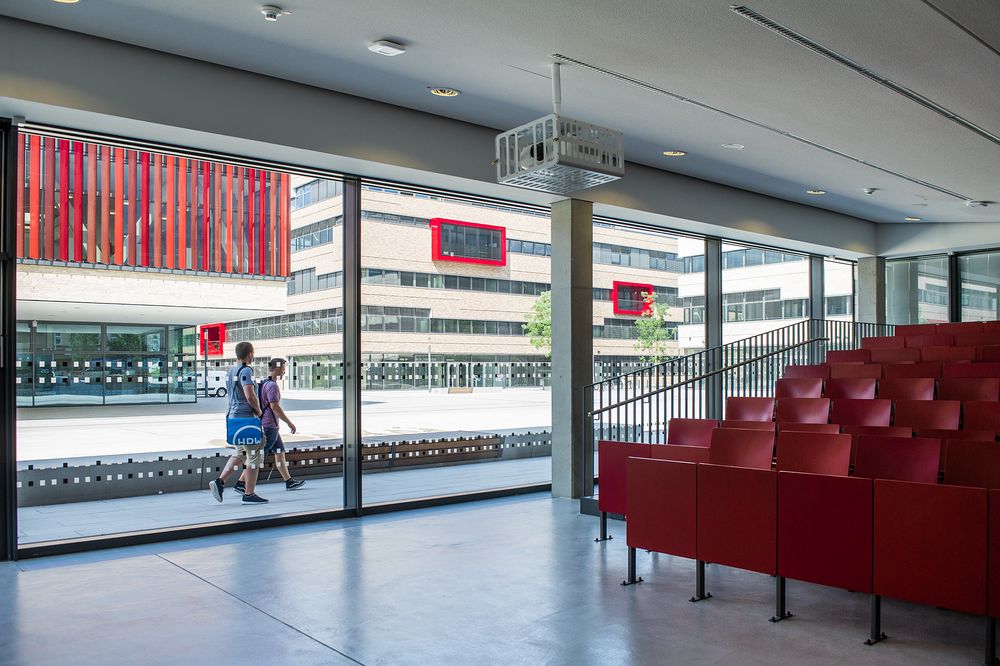
Interaction of inside and outside
The foyers of each of the faculties are located below the high points and provide direct access to the inner courtyards of the individual sections. They are arranged towards the centre and accommodate the principal circulation. From here, the users are guided to the access cores on the ground floor via spacious corridors along the courtyards. The floor-level and storey-high glazing on the ground floor optically extends the campus inside the buildings. The large-format grey concrete stone paving merges into the grey fair-faced screed inside the building. These two design elements link foyers and outdoor areas and ensure a smooth transition between the inside and outside.
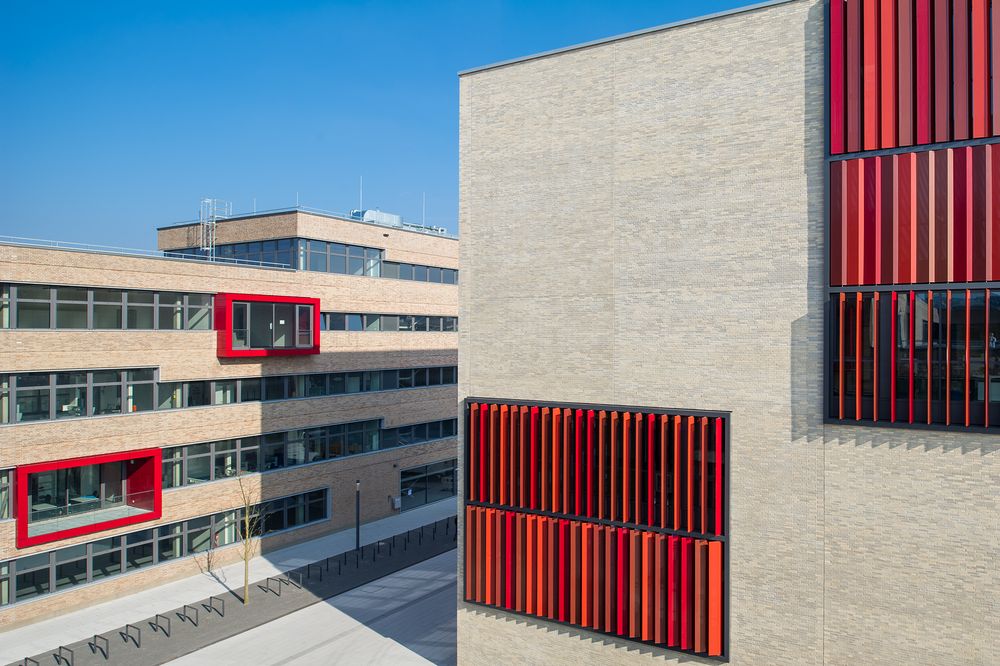
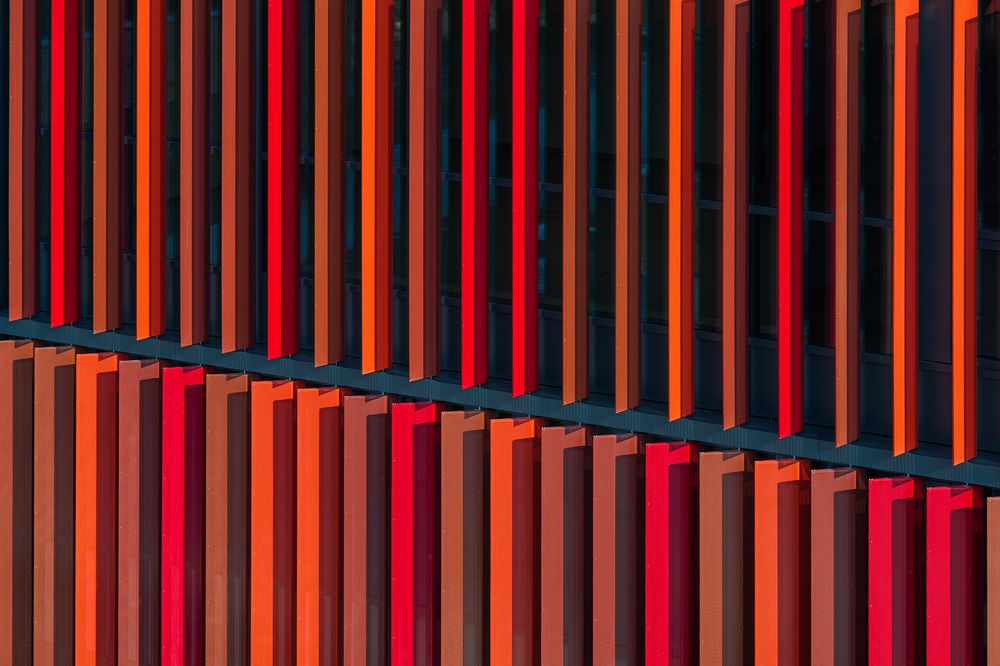
Interaction of form and materiality
The aim for the façade principles and materials of the faculty buildings was to create a modular impression, while the central buildings were to appear spacious and environmentally and technically sound.
Consequently, the façade types follow two different but related principles: The faculty buildings will have a brick façade with window bands and a distinctive embossment, while the central buildings will have a flat façade with suspended privacy screens. The universal colour scheme of warm sand tones and bright red accents unites the two building types.
The campus: a family of buildings with a variety of use options
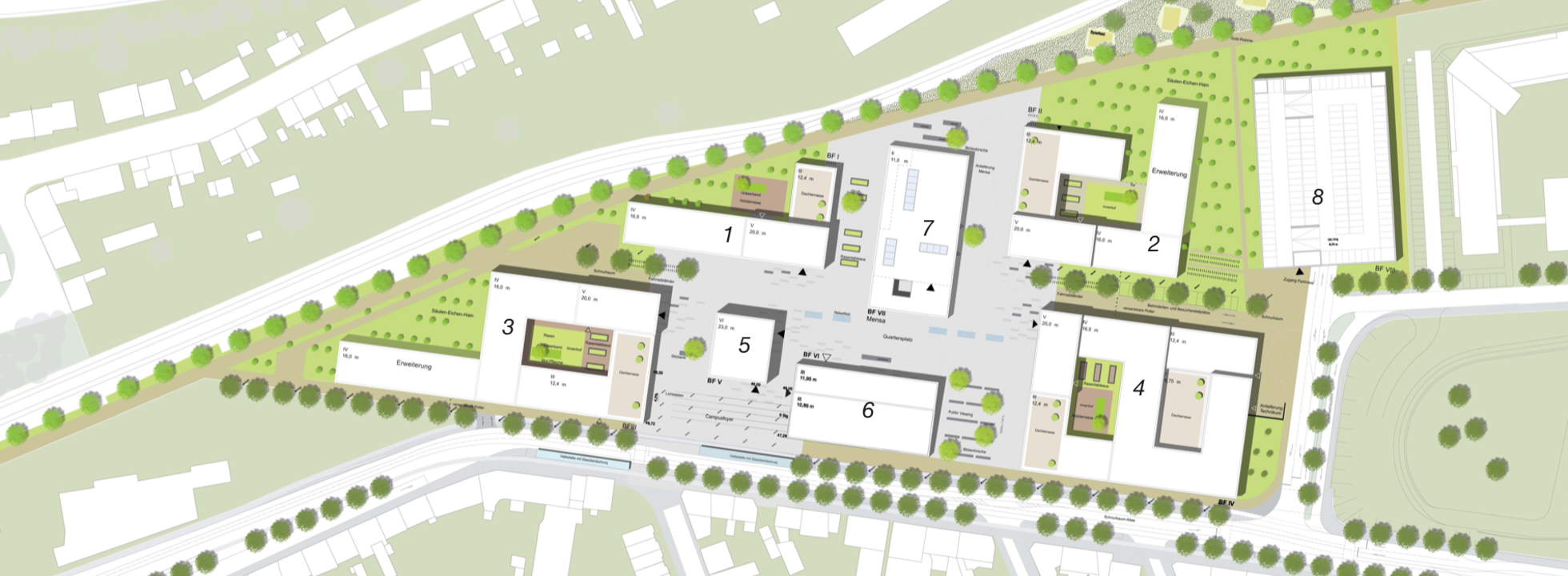
The core of the new campus forms a central square with the three specialist buildings: the library (5), lecture theatres (6) and the canteen (7), surrounded by the four faculty buildings (1-4), shown here with potential future extensions. The multi storey car park (8) to the east completes the campus ensemble.
The requirement to be able to simultaneously implement office, seminar and laboratory functions in every faculty building led to a flexible and simple structure. This in turn generates an identity-creating ensemble of courtyard-like structures that can be interconnected. The faculties have central, semi-open courtyards with varying orientations, but similar proportions and configurations. The shape and location of the foyers allow visual connections between the courtyards and the campus, as well as the public use of the squares in front of them (e.g. public viewing on the square next to the library).
The library is accessible from inside the campus and from the approach to the tramway. The structure allows for flexible handling of the various use layouts. Optional airspaces connect two storeys at a time and convey a sense of openness at cost-effective storey heights.
The foyer of the lecture theatre centre opens onto both the campus and Duisburger Strasse. It is accessible via two entrances, from the tram to the west and from the student cafeteria to the north. Two impressive staircases, which also serve as escape stairs, lead to the upper floors, where seminar rooms and lecture theatres are arranged around a central area.
On the ground floor of the Mensa building there is a foyer, cafeteria, seminar rooms and student workplaces as well as delivery, storage and technical areas. A spacious open staircase leads to the dining hall on the upper floor, which is directly connected to the kitchens. A large opening in the overhanging part of the cafeteria and two single staircases divide the dining hall and allow the large hall to be separated into individual compartments. At the same time, the opening illuminates the space below the cafeteria and strengthens the connection between the campus and the dining hall.
In the university's multi-storey car park, two parking levels, offset in height, face each other and are constructed using a modular system.
Energy and resource concept
The university buildings feature a reduced energy and resource requirement: The university is heated by a thermal power plant close by, building temperatures are regulated by means of radiators or concrete core activation. A solar heating system is also used to harness solar heat.
Sustainable design
In order to safeguard future development, the design allows flexible use of the buildings and an optional extension of the GFA by 20 percent.
The future construction site for potential expansion would be situated on the side facing away from the campus, thus ensuring that the university would continue to operate unhindered.
Subsequent extension of the traffic connection via a second access road from the north would also be possible.
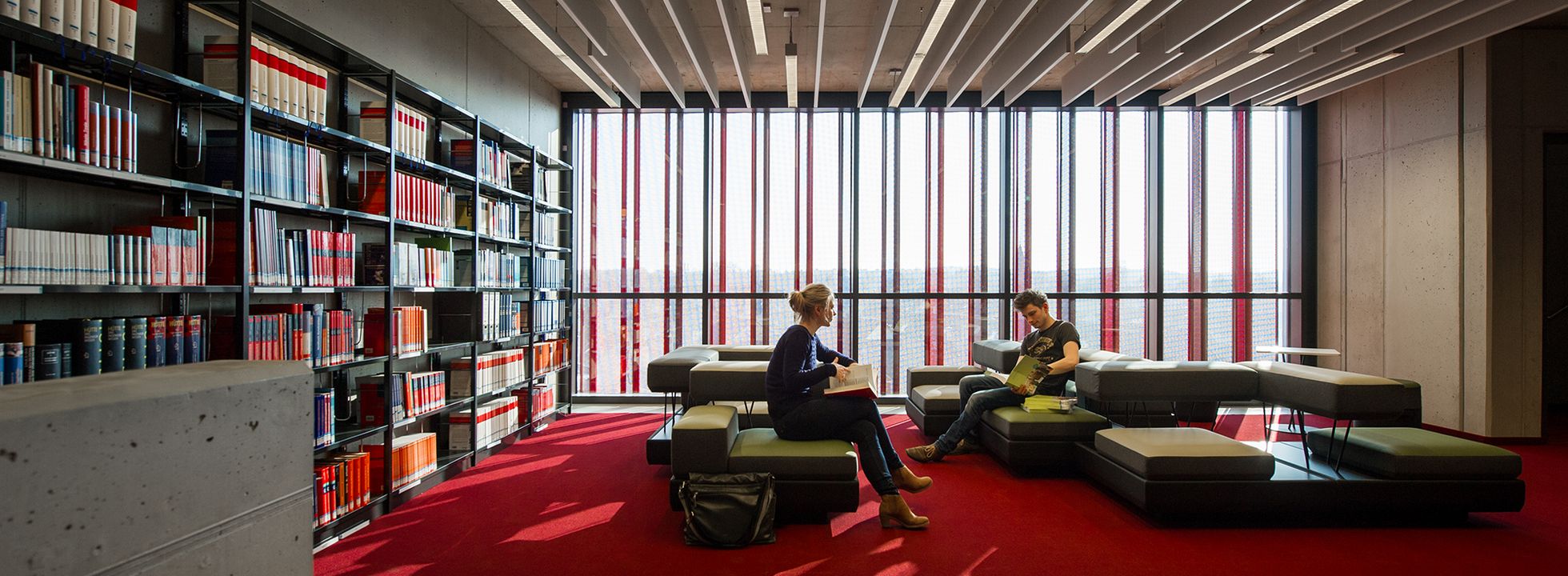
"The new campus is open and transparent, it provides ideal conditions for teaching and learning and ample room for research."
Prof. Gudrun Stockmanns, HRW President

